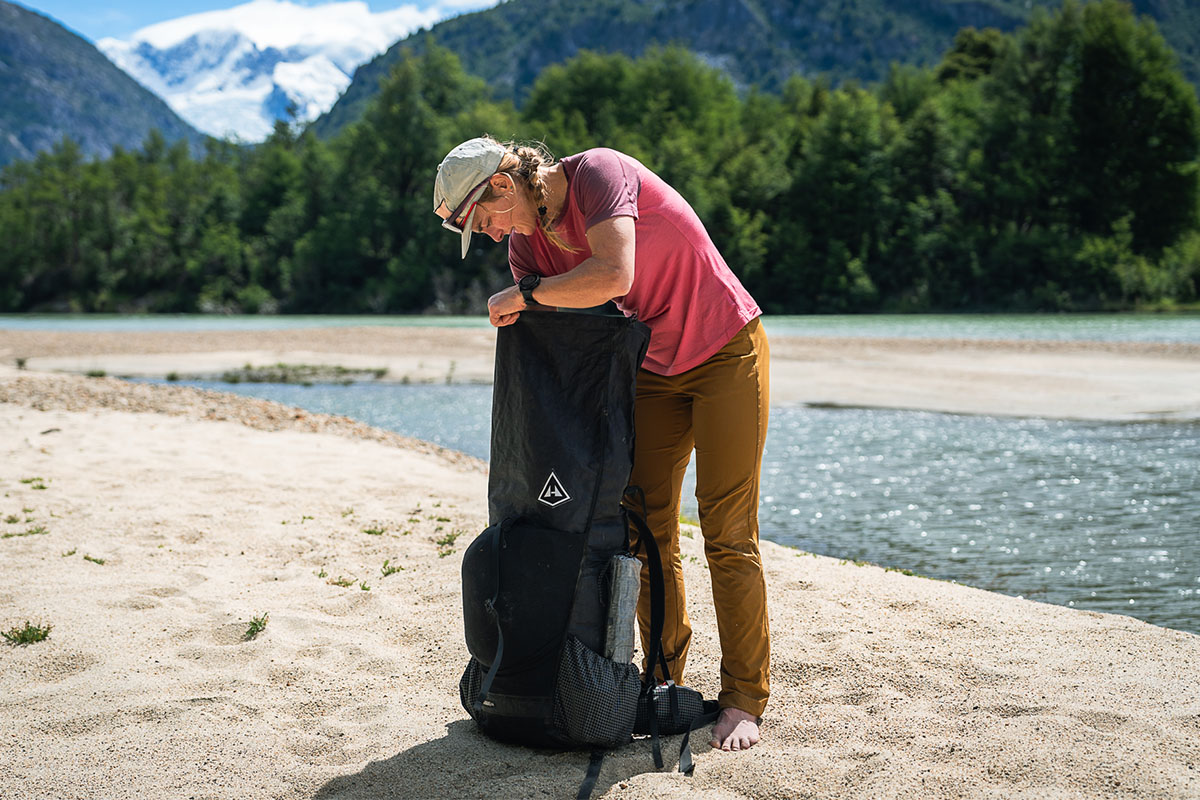
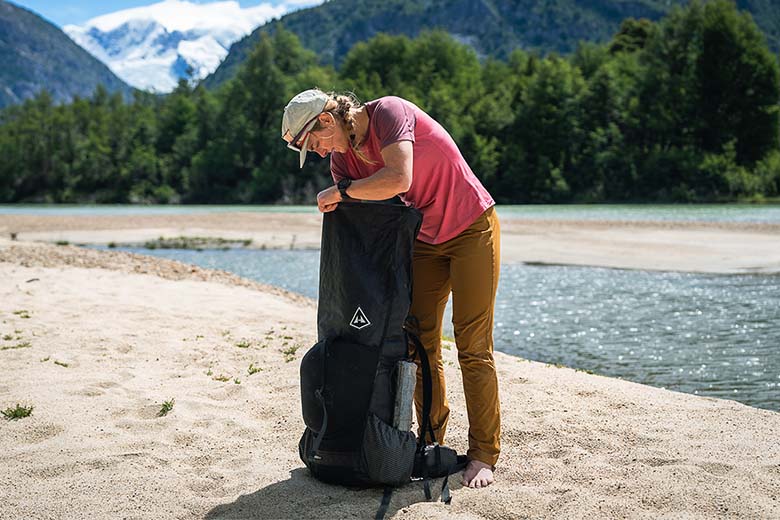
Price: $420
Weight: 2 lb. 2.1 oz. (black pack in a size medium)
Fabric: Dyneema (150D)
What we like: Lighter than much of the competition without making serious concessions in carrying comfort or organization.
What we don’t: Limited fit adjustability, delicate components, and backpanel isn’t particularly breathable.
See the Hyperlite Unbound 55
Hyperlite Mountain Gear is an ultralight pack specialist with a loyal following among thru-hikers and minimalist backpackers. A recent addition to the brand’s premium lineup, the Unbound slots in as one of their lightest offerings but doesn’t feel as compromised as its weight would suggest. We put the Unbound 55 (it’s also sold in a 40L version) through its paces in Washington state and on a rugged backpacking trip in Chilean Patagonia and had overall positive experiences. There’s little in the way of fit customization, and Hyperlite did need to make some durability concessions to shave weight, but it’s a competitive addition to the UL market. Below are our impressions of the Unbound 55. To see how it stacks up to the competition, check out our articles on the best ultralight backpacks and best backpacking backpacks.
For the most part, the Hyperlite Unbound 55 is surprisingly comfortable for an ultralight design. While fairly minimalist, the hipbelt and shoulder straps are sufficiently padded and kept me pain-free throughout a five-day backpacking trip in Patagonia. And despite only using a single aluminum stay (most Hyperlite packs have two), the Unbound carries a full load well. For reference, I stuffed the pack with around 30 pounds of gear and food—it’s rated to 40 pounds, which is higher than many UL competitors—and came away with very few complaints.
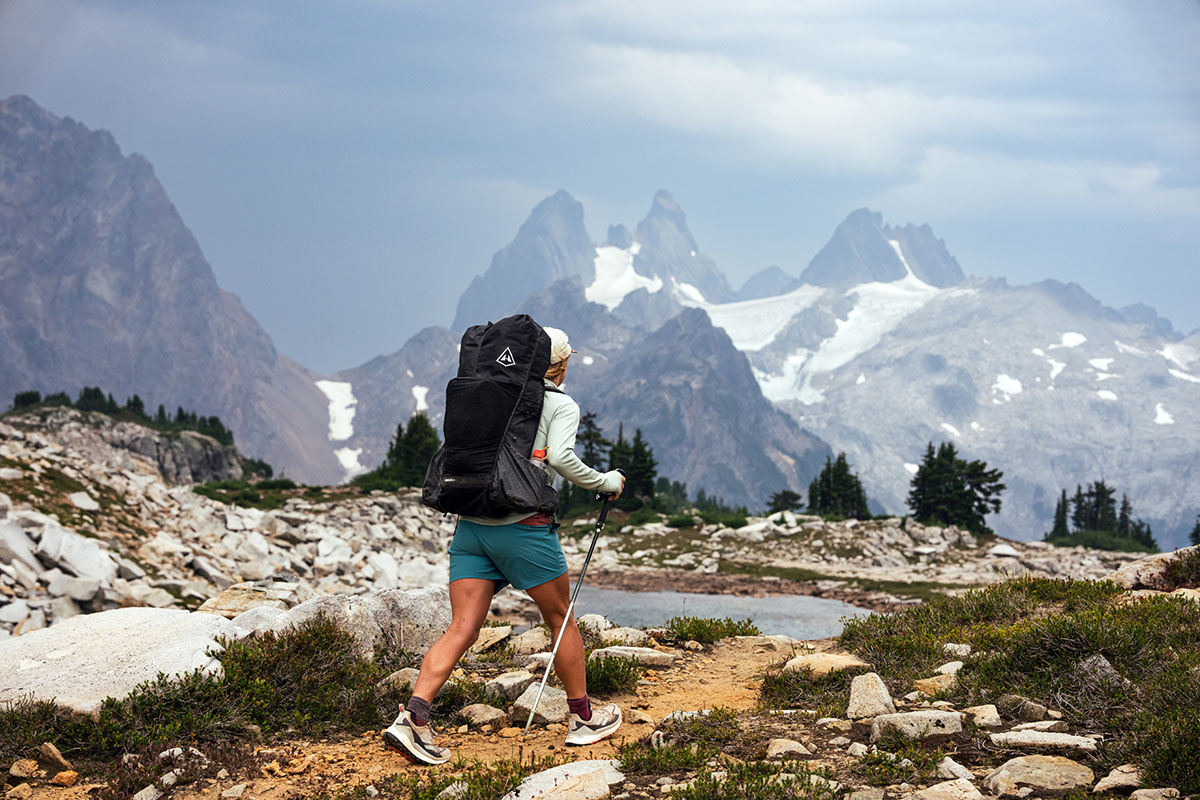
That said, the Unbound forgoes load lifter straps for bringing the weight closer to your back, and there’s nothing in the way of torso adjustability. The hipbelt is also free-floating apart from where it connects at the base of the pack (many packs have straps here to fine-tune the positioning). With all that in mind, I expected the Unbound to have a fairly crude and unruly fit. However, apart from some minor pinching along my shoulders—which was to be expected after long days on the trail—I felt comfortable and balanced, even when navigating technical terrain.
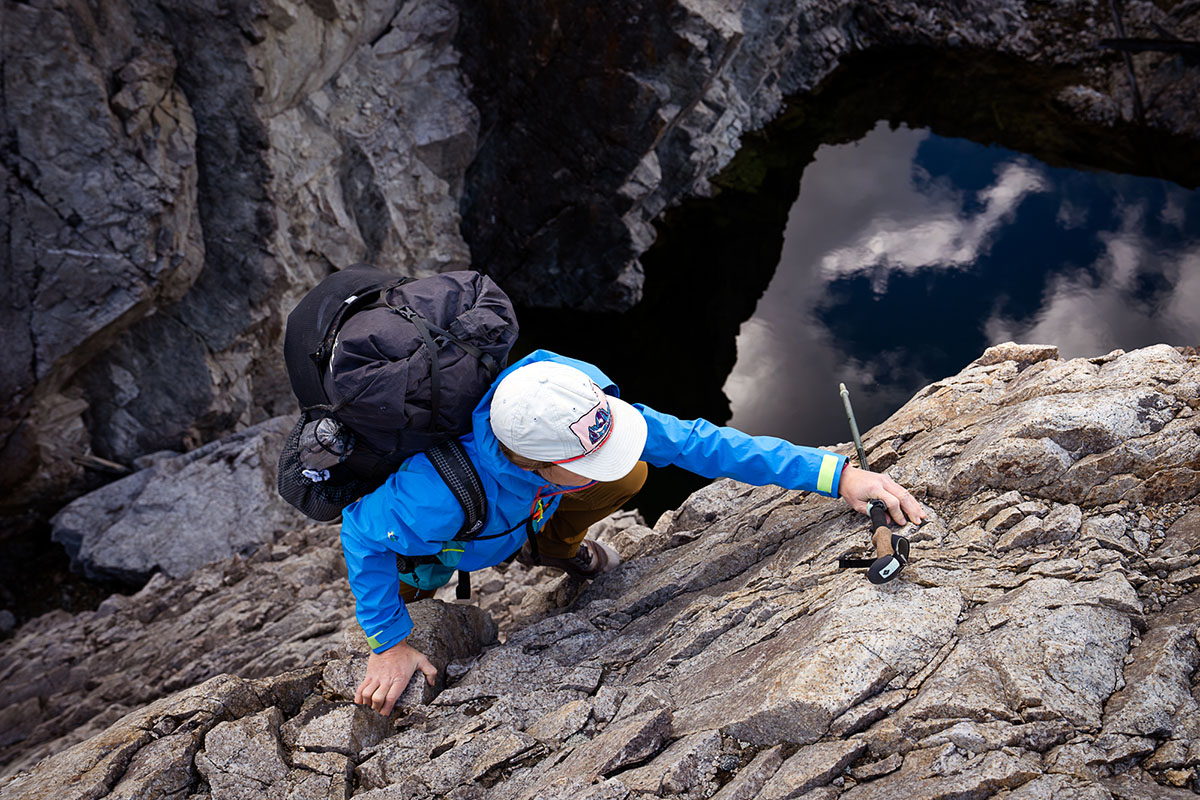
At 2 pounds 2.1 ounces for the black colorway (the thinner white version is 1 lb. 14.2 oz.), the Unbound 55 is highly competitive within the UL market. For comparison, it’s nearly identical to our favorite ultralight pack this year: Hyperlite’s own Southwest 55, which checks in at 2 pounds 2.6 ounces for the more durable black option (1 lb. 15.7 oz. for the white model). You can go lighter with an even more trimmed-down option like the Mountain Laurel Designs Exodus 55L (1 lb. 2 oz. for a size medium) or Zpacks Arc Haul Ultra 60L (1 lb. 5.4 oz. in the same size), but those come with sacrifices in durability and carrying comfort. All told, the Unbound is a surprisingly strong performer for its weight and packs down small, too—great for stashing in a duffel during travel.
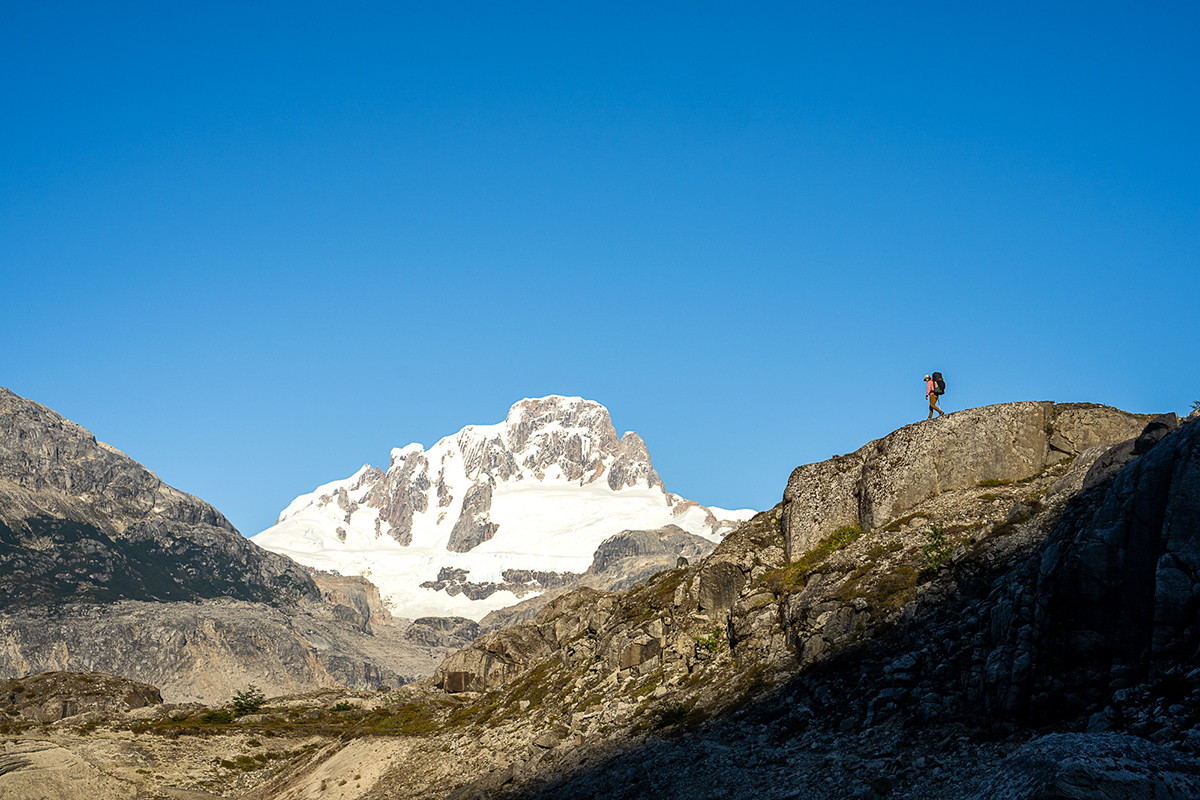
The Unbound 55’s organization layout is basic but relatively standard for a UL design. The main compartment is generously sized for swallowing gear and clothing, with a roll-top closure that’s easy to adjust based on the size of your load. That said, I don’t love the Y-shaped strap system that secures over the lid. While it does provide a slightly more even cinch, I found the straps prone to twisting and wish Hyperlite had gone with a simple strap that runs directly over the lid (like what you get with their Southwest pack). The lidless design might also be a bit of an adjustment for those switching over from standard backpacking fare, although the large front and side pockets (both of which I cover below) help make up for it. And there’s no sleeve inside the pack for securing a hydration bladder, although I didn’t mind using water bottles.
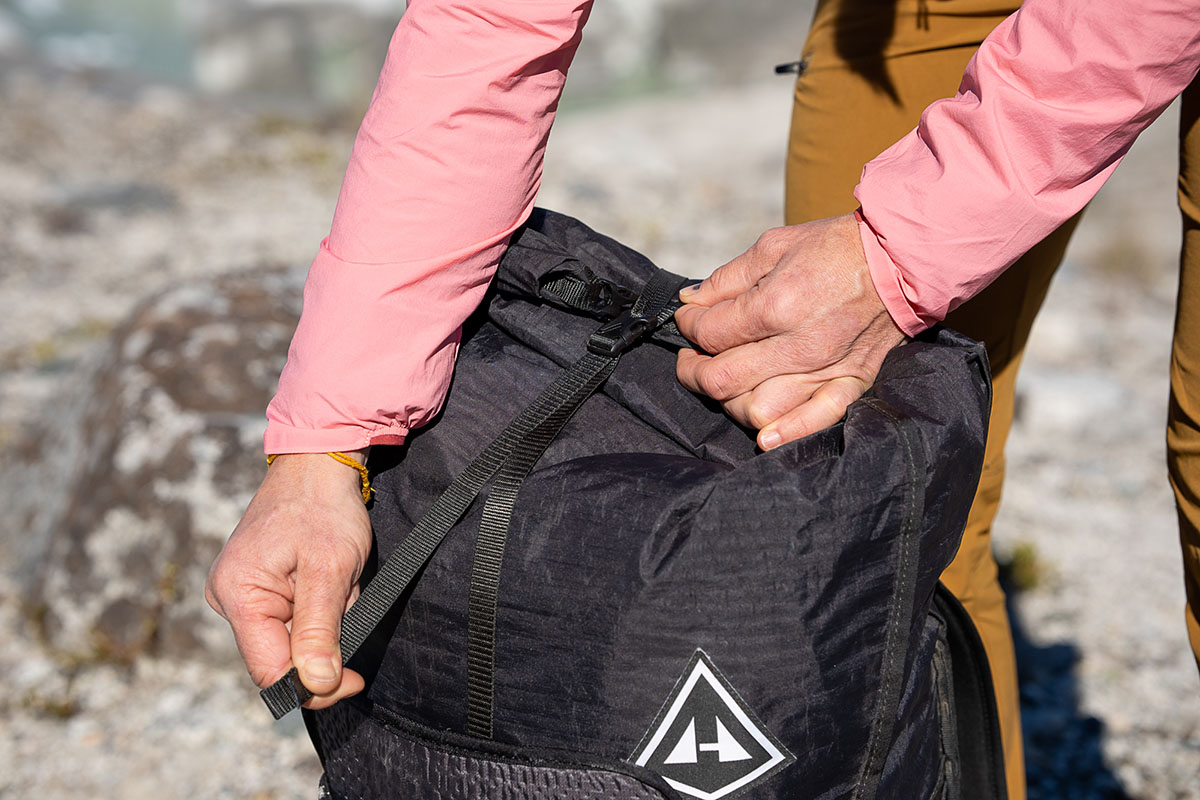
The Unbound’s large hipbelt, side, and front pockets make it easy to divvy up smaller items. The hipbelt pockets handily fit a phone and a few bars each, although the zippers are difficult to operate with one hand since they open from the inside out. Their positioning can also result in a gap for items to fall out (make sure to fully reseal them each time). The oversized side pockets worked well for my tent poles, camp mug, and sunglasses (all in one), with cinch cords to secure everything and bungee straps above to affix longer items. One thing to note is that these pockets are made of Dyneema rather than standard mesh, so there’s no way for water to drain. And the front shove-it pocket is even bigger—enough for a sit pad, camp shoes, and multiple jackets—but not waterproof. If you anticipate storing layers here, the Southwest has a Dyneema stash pocket. And there’s an additional elastic dump pocket that’s half as tall as the main one, but I didn’t find it very useful (it could be good for low-profile items like a map).
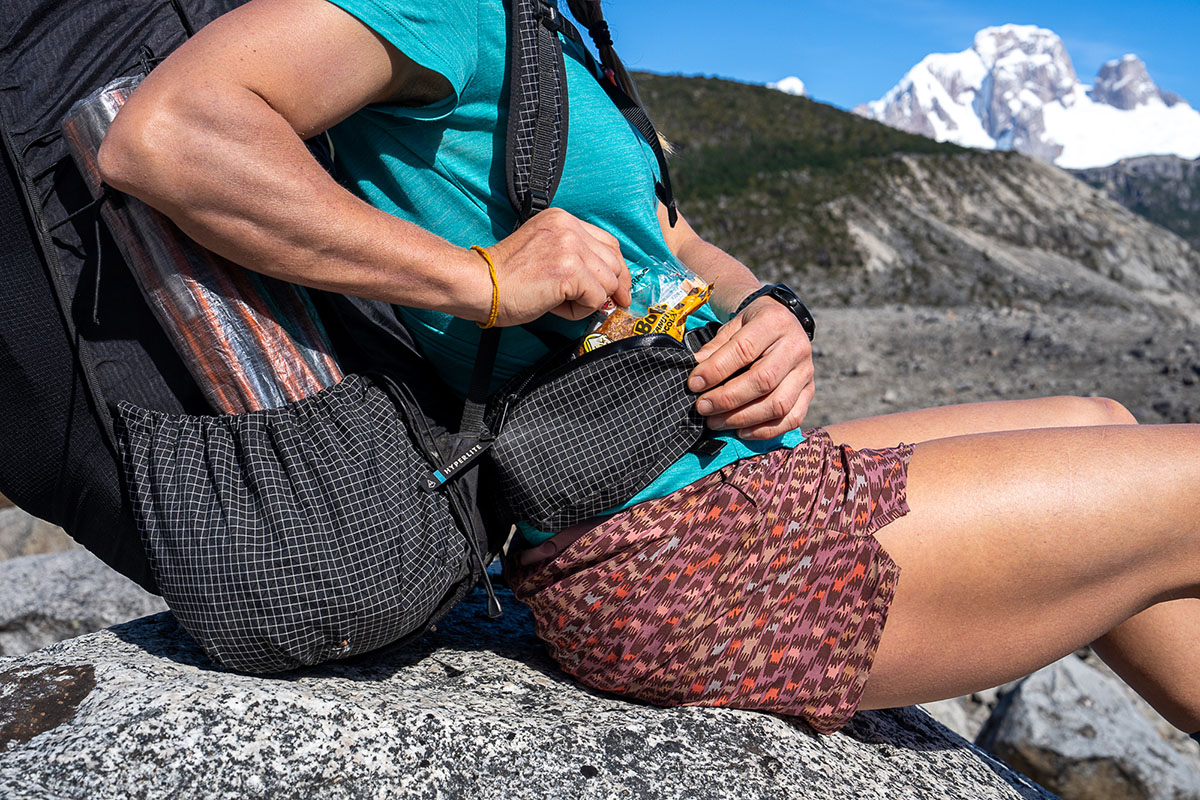
Rounding out the Hyperlite’s storage layout, there’s a zippered stash pocket at the bottom and plenty of external attachment points. I didn’t end up using the bottom pocket very often, but it’s a nice option for separating wet or dirty items from the rest of your kit. And the daisy chain webbing—which lines both sides and the base of the front shove-it pocket—makes it easy to attach gear externally with a carabiner. Finally, if you find yourself wishing for more storage options, Hyperlite does sell a few compatible add-ons, including a shoulder strap pocket, water bottle pocket/holster, and dedicated camera pouch.
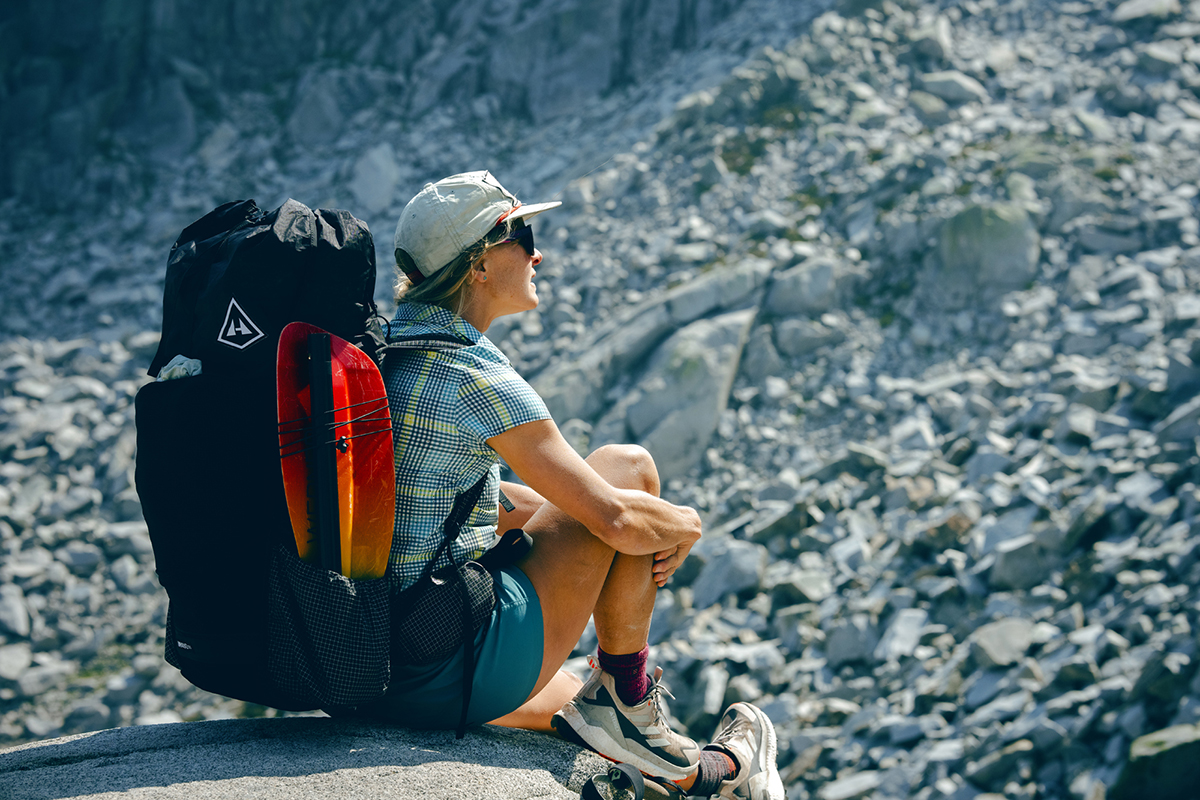
Most ultralight packs have fairly streamlined backpanel designs, and the Hyperlite Unbound 55 is no exception. I haven’t experienced any overheating, which is impressive given that most of the pack’s testing was done in warm to hot weather, but the lack of breathability will be noticeable for those coming from mesh-heavy designs. If ventilation is a top priority, Osprey’s Exos/Eja collection is unmatched in the UL market with a suspended mesh backpanel that does a great job promoting airflow, although you’ll pay a sizable weight penalty (the Exos 58 is 2 lb. 13.4 oz.).
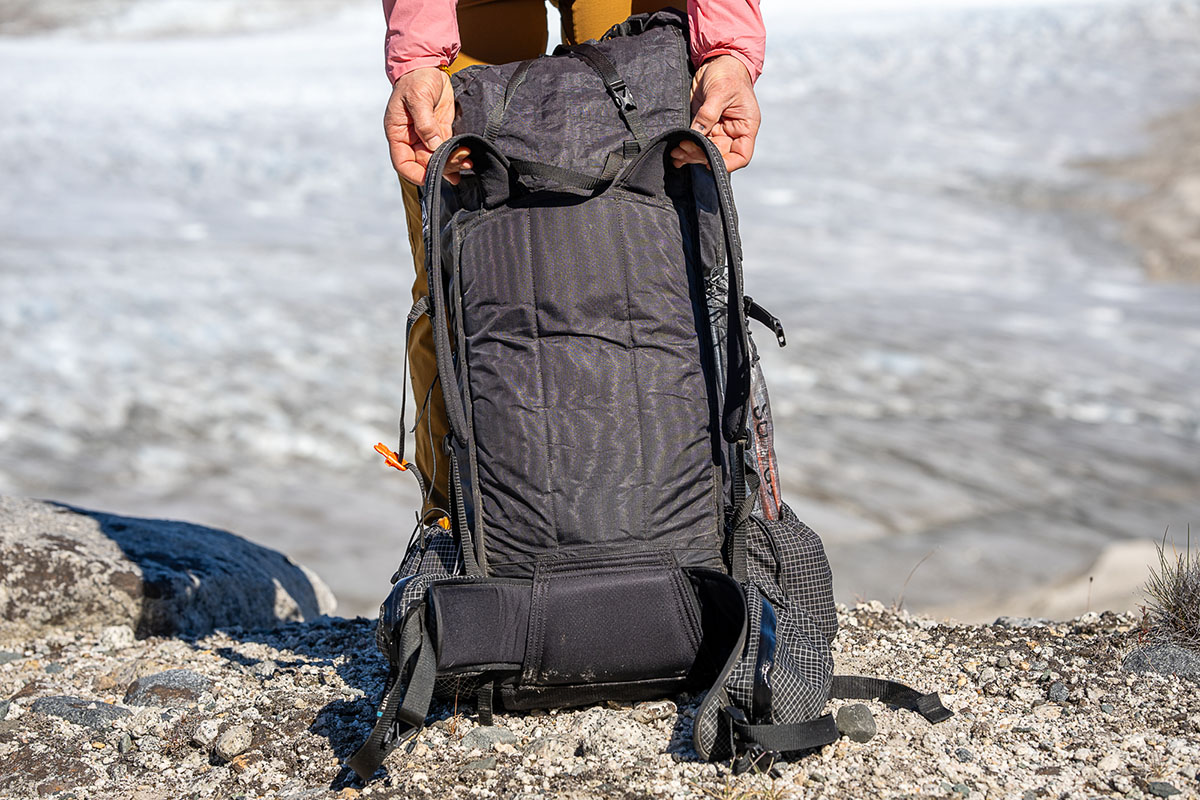
In addition to being very strong for its weight, Dyneema is also inherently waterproof. For added assurance, Hyperlite also taped all of the vertical side seams and sewn-on features (like the logos). In short, I never had to worry about the contents of my pack getting wet. Even when I strapped it to the front of a packraft with nothing in the way of added protection, all of my belongings stayed completely dry. My only complaint is that the large front stuff pocket isn’t waterproof. Since it takes up a good portion of the pack, I wish I were able to store items like my down jacket inside without worrying about them getting soaked.

Like many UL designs, the Unbound 55 makes some durability concessions to keep weight to a minimum. The good news is that the pack’s body is noticeably robust with thick, 150-denier (D) Dyneema covering most of the exterior (the white version of the Unbound uses 50D, which is thinner and less durable). However, the smaller components—including the straps, buckles, and drawcords—have a noticeably delicate and flimsy feel. Some have even failed after just two weeks of use: The end of one of the bungees came loose (my solution was to tie a knot at the end), and one of the side pockets has a small hole in it. In other words, the Unbound isn’t the most confidence-inspiring design—especially if you’ll be doing a lot of off-trail travel—but it’s about average for an ultralight backpack.
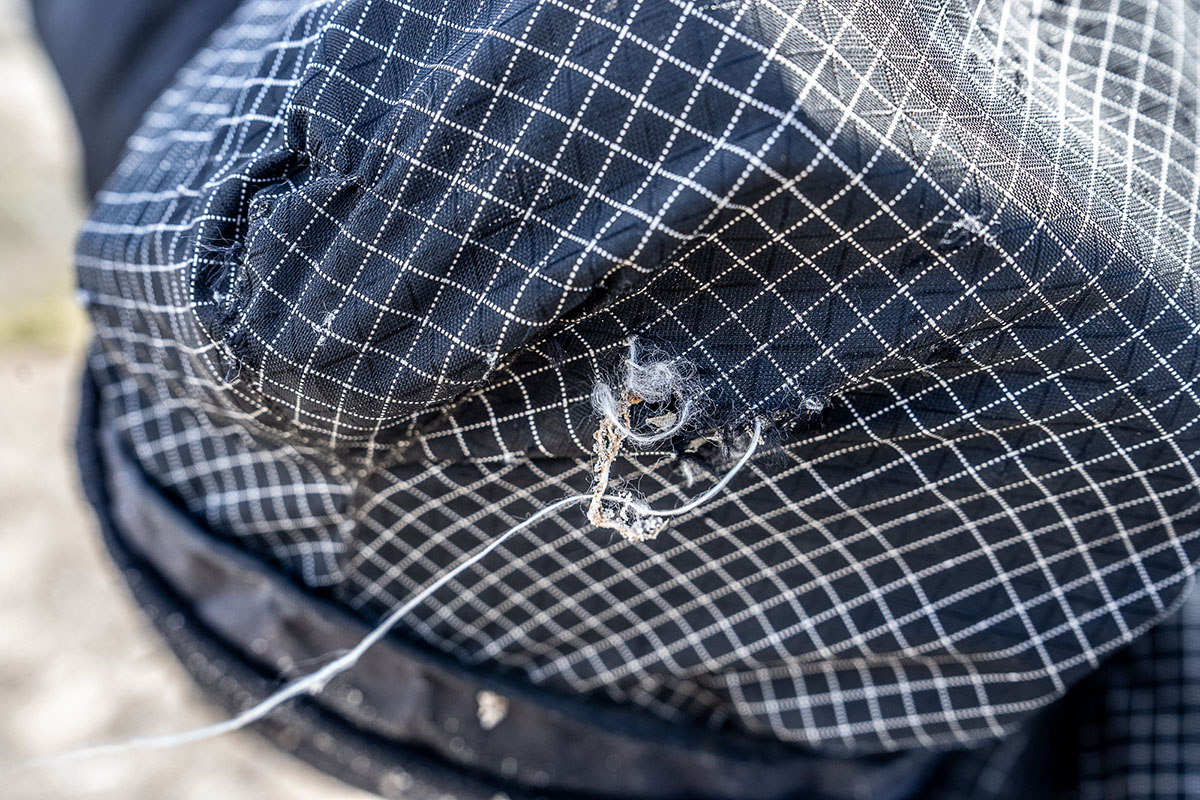
The Unbound 55 is available in four sizes: small, medium, large, and tall. I opted for the medium, which fits 17- to 19-inch torso lengths, and had no issues with overall fit. As I mentioned, however, the pack is pretty bereft in terms of fit customization: There are no load lifter straps for bringing the pack closer to your body, nor is there a way to adjust the torso length. I thankfully didn’t need to make any changes, but the pack’s lack of adjustability will be an important consideration for some. Of note: You can swap out the Unbound’s hipbelt for a larger or smaller size, but it’s a relatively steep addition at $49.
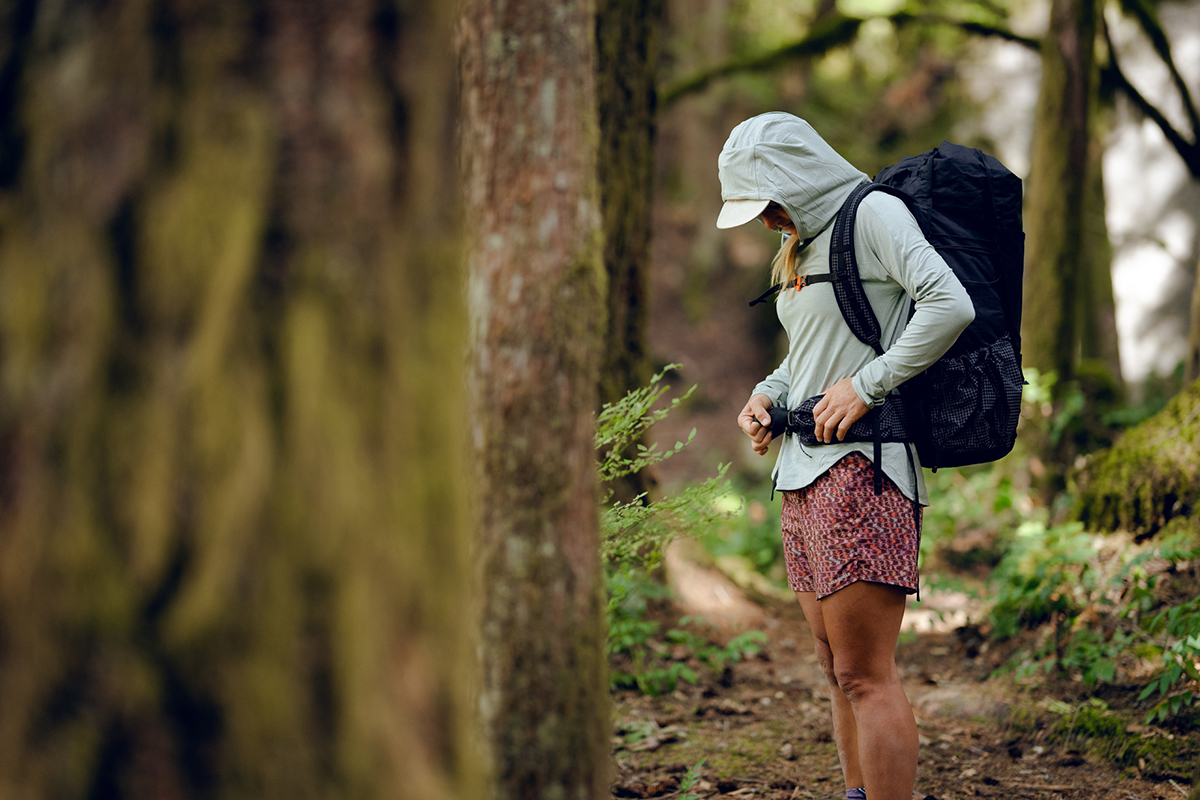
I tested the black version of the Unbound 55 for this review, which costs $420 and checks in at 2 pounds 2.1 ounces. As I mentioned previously, there’s also a white colorway available that’s a little cheaper ($399) and lighter (1 lb. 14.2 oz.) but less durable. For serious thru-hikers or minimalist overnights, Hyperlite also sells the pack in a 40-liter version. Like its larger sibling, the Unbound 40 comes in four sizes, is offered in both black ($389) and white ($369) options, and is competitively light compared to similarly sized alternatives.
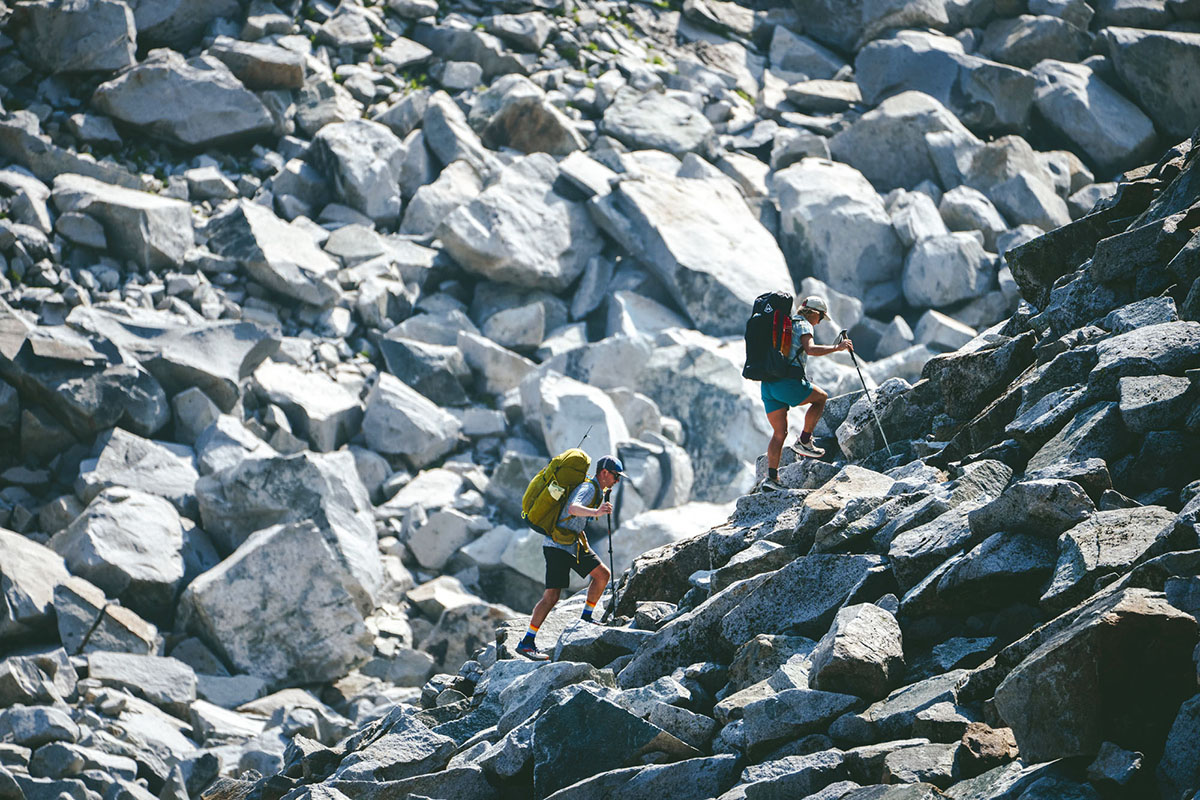
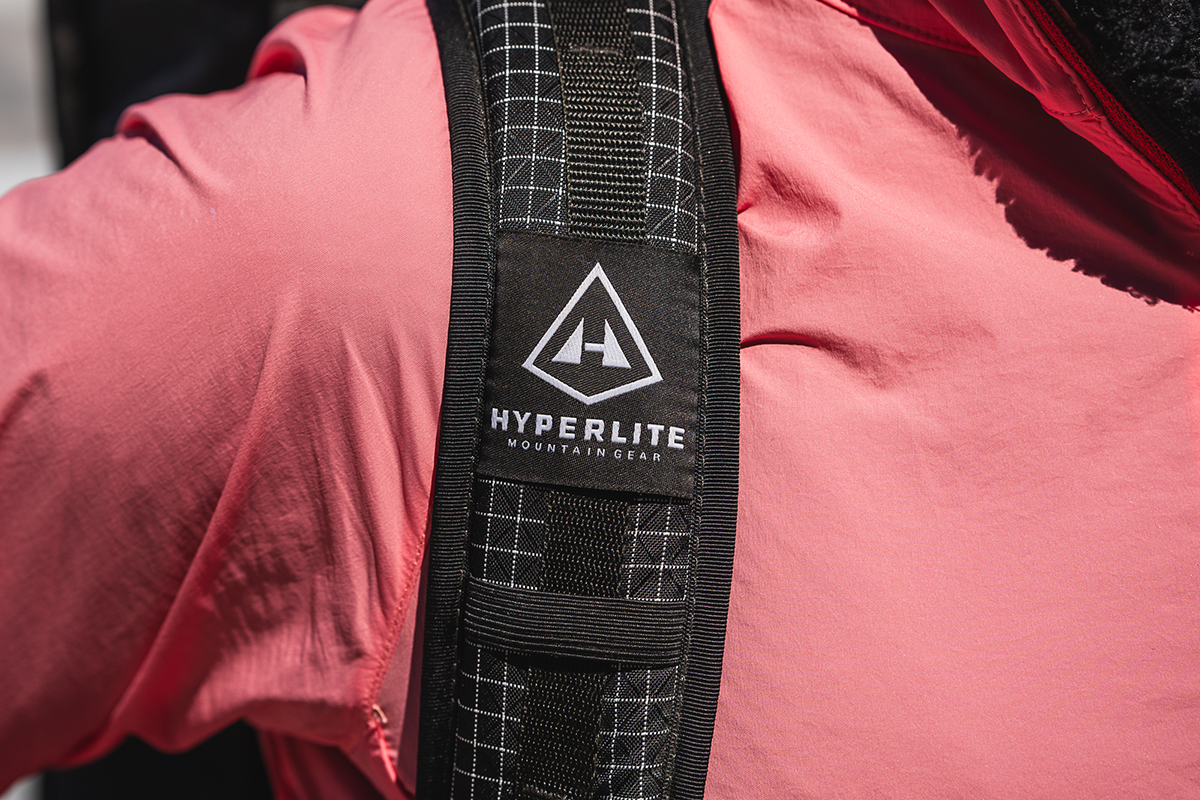
| Pack | Price | Weight | Fabric | Capacities | Load Limit |
|---|---|---|---|---|---|
| Hyperlite Unbound 55 | $420 | 2 lb. 2.1 oz. | Dyneema (150D) | 40, 55L | 40 lb. |
| Hyperlite Southwest 55 | $399 | 2 lb. 2.6 oz. | Dyneema (150D) | 40, 55, 70L | 40 lb. |
| Zpacks Arc Haul Ultra 60L | $399 | 1 lb. 5.4 oz. | Dyneema (3.5 oz./sq. yd.) | 40, 50, 60, 70L | 40 lb. |
| Osprey Exos 58 | $260 | 2 lb. 13.4 oz. | Nylon (100D & 400D) | 38, 48, 58L | 30-35 lb. |
| Gossamer Gear Mariposa 60 | $315 | 2 lb. 2.2 oz. | Robic nylon (100D & 210D) | 60L | 35 lb. |
The Unbound 55 is a well-rounded and feathery ultralight backpack, but Hyperlite’s own Southwest 55 is our current favorite. The two packs share a lot in common: Both are made with light but tough Dyneema (and offered in two fabric thickness options), check in at very similar weights (the Southwest is 0.5 oz. heavier), and are capable of carrying loads up to 40 pounds. However, the Southwest uses slightly more robust components, costs a little less ($379 to $399 depending on colorway), and tacks on features like a hydration sleeve, ice axe attachment loop, and a solid—rather than mesh—front shove-it pocket. It also boasts a second aluminum stay for added support and structure. Neither design is a standout in organization or breathability, but we think the Southwest balances its priorities a little better, earning it our endorsement over the Unbound. It’s also compatible with Hyperlite’s Hip Belt Extender (the Unbound is not), which adds up to 18 inches of additional length to the pack’s waist belt.
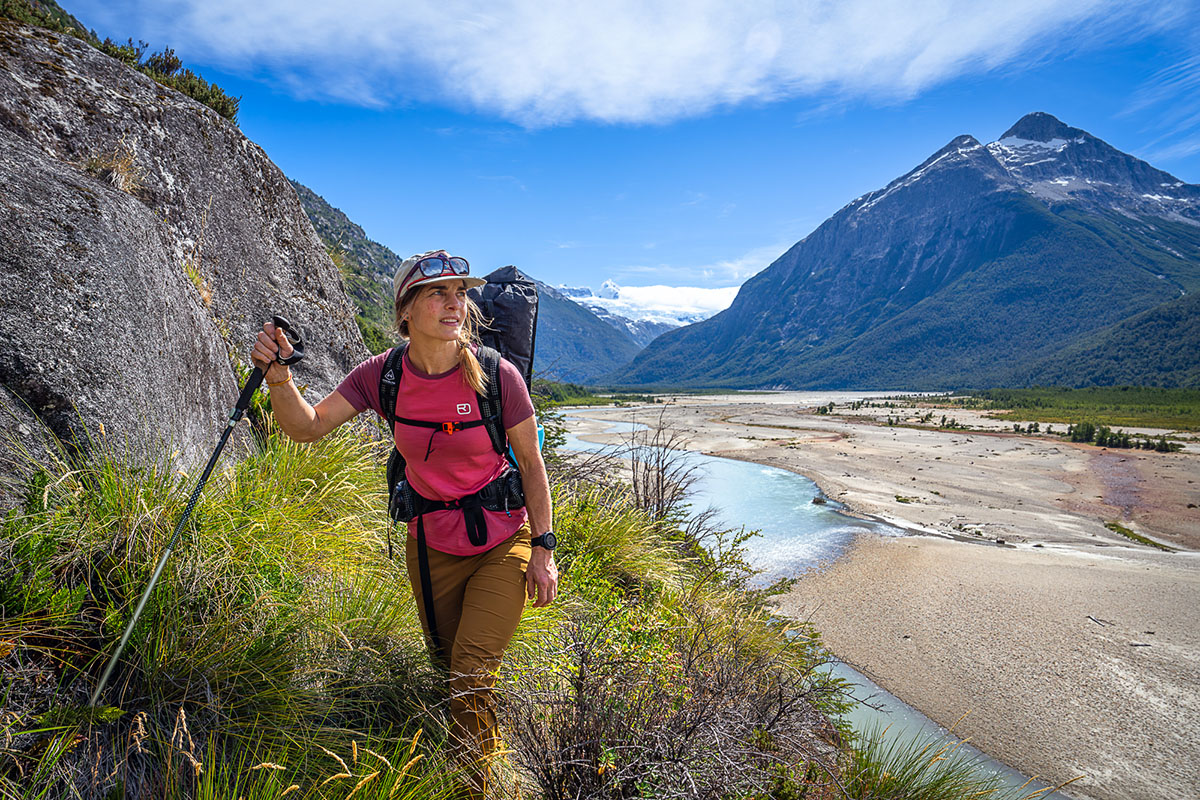
Zpacks is another Dyneema pack specialist, and their Arc Haul Ultra 60L gives the Unbound 55 a run for its money in a few areas. First is better fit customization, including an adjustable torso length and load lifter straps. The Arc Haul is also notably lighter than the Unbound at 1 pound 5.4 ounces (for the medium torso length and hipbelt), and its suspended lycra backpanel does a much better job encouraging airflow than the Hyperlite’s basic foam design. On the flip side, the Unbound is more durable with thicker Dyneema covering most of the body and more comfortable when hauling a full load (both packs are rated to 40 lb., but we would advise staying under that with the Zpacks). For around the same price, the heavier Unbound feels less compromised.
As we mentioned above, Osprey’s Exos 58 (and women’s Eja 58) is a much better breather than the Unbound and even beats out the aforementioned Arc Haul Ultra. This is largely due to the Osprey's suspended mesh backpanel that separates the pack from the body, offering unparalleled ventilation compared to most ultralight competitors. It also tacks on an adjustable torso length for achieving a proper fit, along with a floating lid and load lifter straps. You do pay a sizable weight penalty for all of these additions (a men’s medium checks in at 2 lb. 13.4 oz.), although we appreciate the ability to remove features like the lid, sleeping pad straps, and side compression straps (for more, see our in-depth Exos 58 review). All told, the Osprey is a great option for those transitioning from a traditional backpack to an ultralight design, but discerning ounce-counters will almost certainly prefer the lighter and more streamlined Unbound.
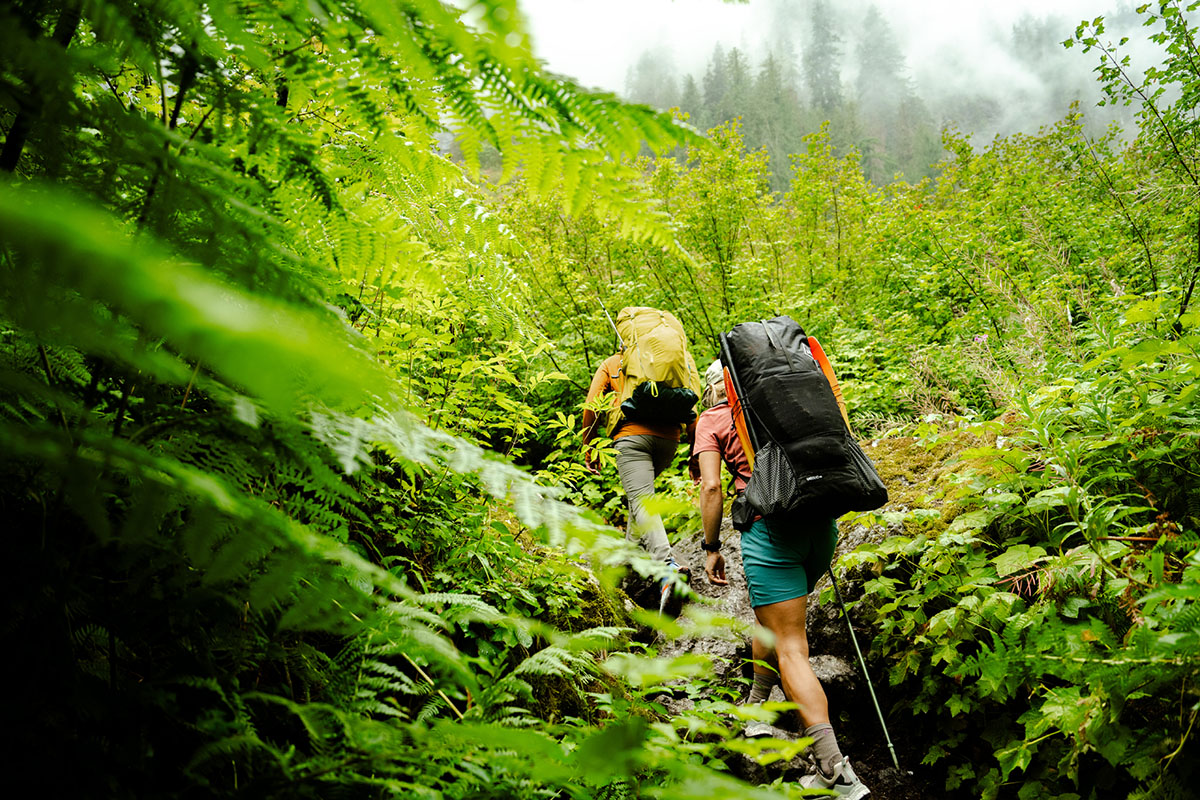
A final alternative to consider is Gossamer Gear’s Mariposa 60, which has become one of our go-tos for everything from quick overnights to week-long missions. Despite clocking in at a nearly identical weight (for the medium frame and hipbelt), the Mariposa offers 5 additional liters of capacity compared to the Unbound, along with seven exterior pockets for divvying up the essentials. And importantly, we’ve found it impressively supportive for loads up to 35 pounds (on par with the Hyperlite). That said, the Unbound is the more durable option of the two (the Gossamer Gear uses a mix of 100D and 210D Robic nylon) and comes in four sizes compared to the Mariposa’s three (neither offers torso adjustability). Finally, we found the Mariposa’s foam backpanel prone to bunching up throughout the day, although it’s easy to swap out. In the end, both are well-built and capable UL designs, but the Mariposa manages to pull it off for significantly less than the Unbound.
Editor’s note: We usually provide a live price comparison table below our outdoor gear reviews, but the Unbound is currently only available directly through Hyperlite Mountain Gear. You can see the Unbound 55 page here and support us in the process. Thanks!